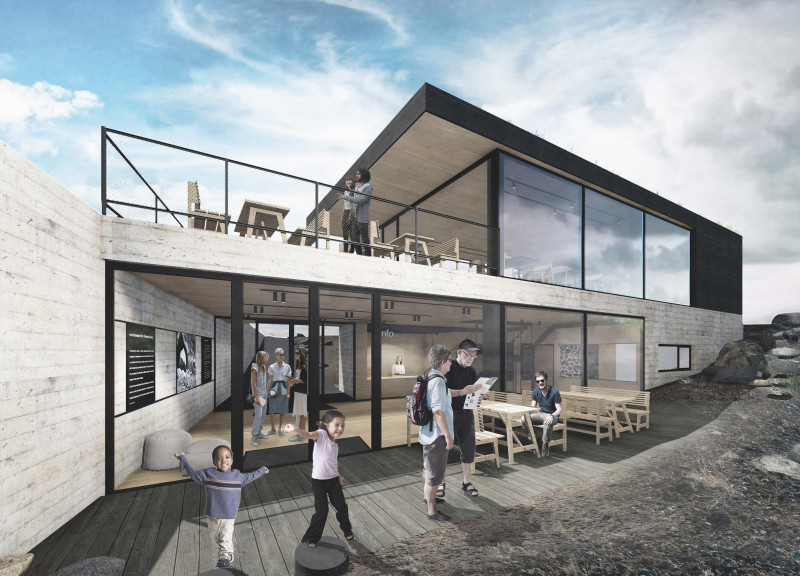5 key facts about this project
The Black Lava Field Visitor Center is located in the Dimmuborgir area of Iceland, a region famous for its dramatic volcanic landscapes. Positioned between Lake Mvatn and Hverfjall volcano, the center serves as a hub for tourists who wish to explore the unique geothermal features of the area. The design aims to create a connection between the built environment and the natural surroundings, reflecting the rugged beauty of Iceland while addressing the specific challenges of the local climate.
Architecture Concept
The design integrates the building with the surrounding landscape, taking into account the strong winds that are common in this area. The visitor center is oriented to maximize exposure to sunlight, with large glazed surfaces facing south. This not only enhances energy efficiency but also offers visitors sweeping views of the lava field, volcano, and lake, enriching their experience in nature.
Materials and Structure
The visitor center makes use of shou-sugi-ban wood planks and concrete slabs, chosen for their ability to withstand harsh weather conditions. Shou-sugi-ban wood features a weather-resistant finish that enhances durability, while concrete slabs provide structural stability. The choice of these materials helps the building blend into its volcanic setting, allowing it to maintain a low profile against the striking backdrop of the landscape.
Functional Design Elements
This facility accommodates various needs, offering a café, an information center, restrooms, and a children’s playground. The café features an outdoor terrace that allows visitors to enjoy views when the weather is favorable, as well as sheltered spots for bad weather. Pathways within the layout are designed for easy movement, ensuring that visitors can navigate the site without difficulty.
Engagement with Nature
Educational information points are strategically placed along the paths, helping to enhance the visitor experience by providing insights into the local ecology and geology. The playground incorporates natural features like climbing stones, encouraging children to engage with the landscape. This thoughtful design fosters a connection between visitors and the environment, making the experience more memorable and meaningful.





















































